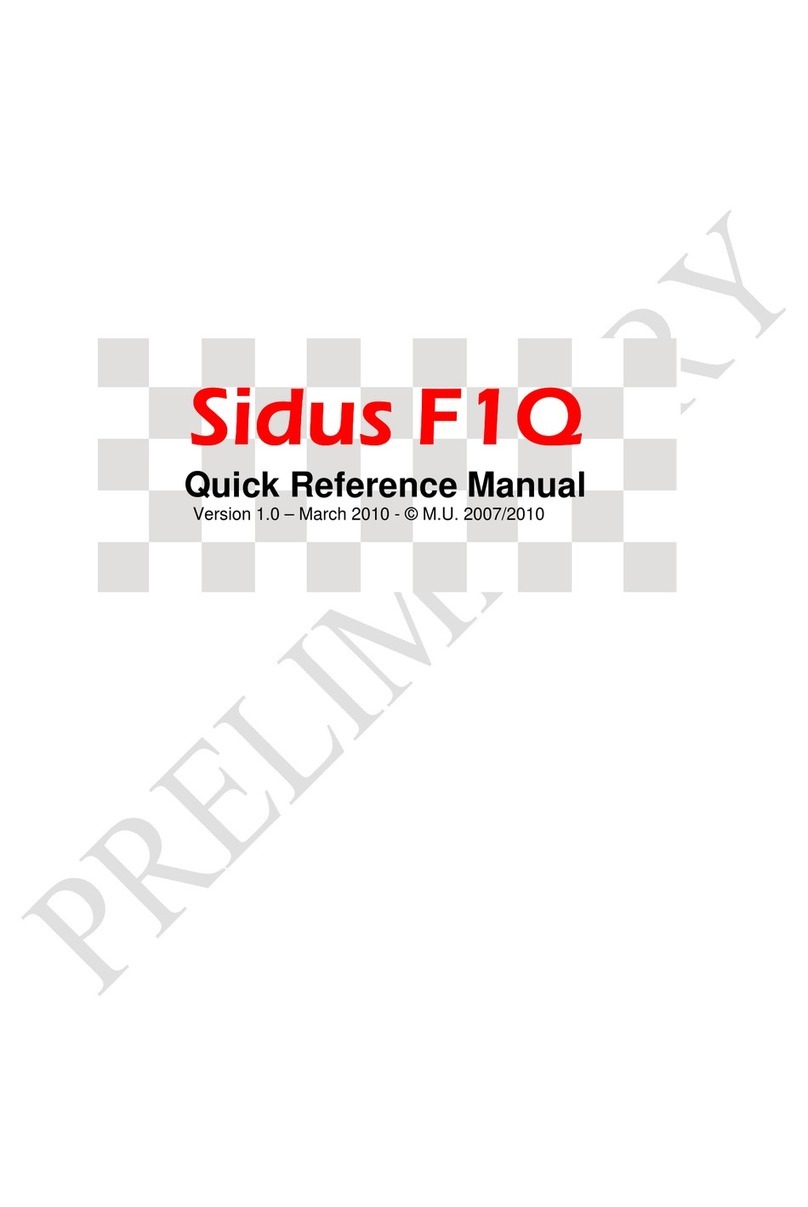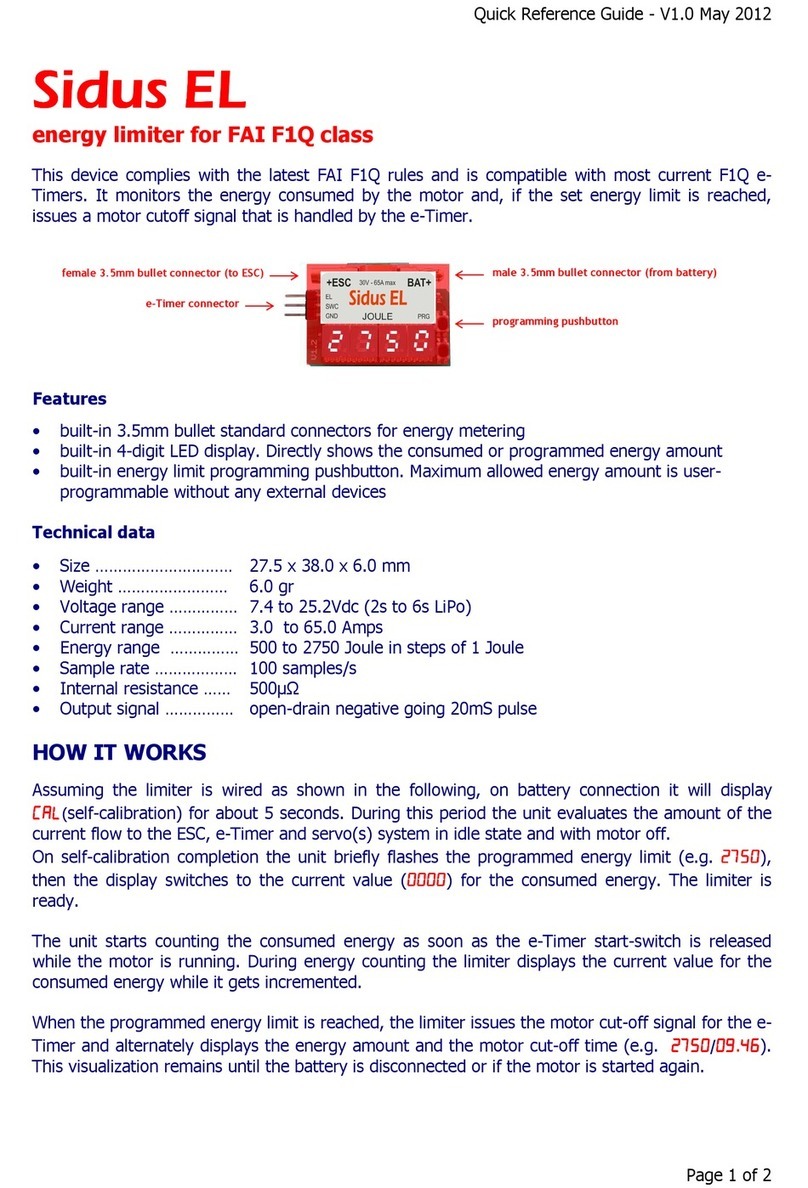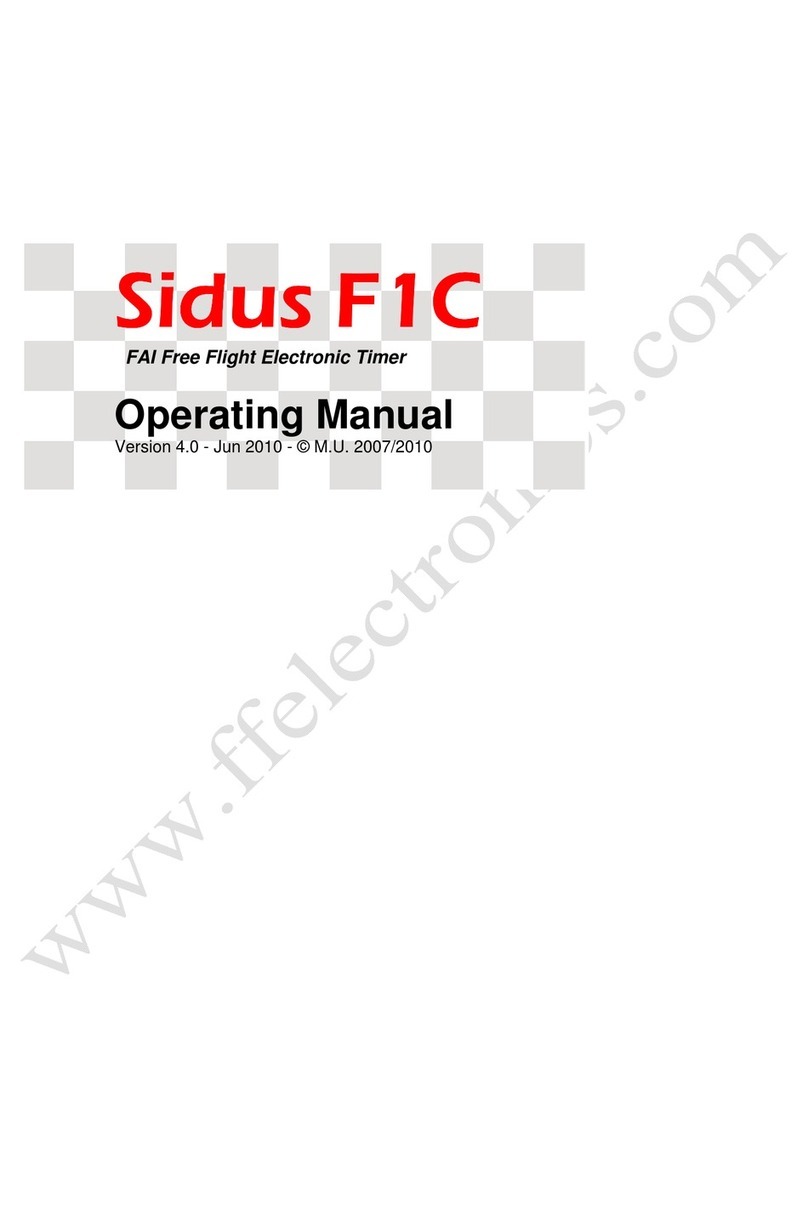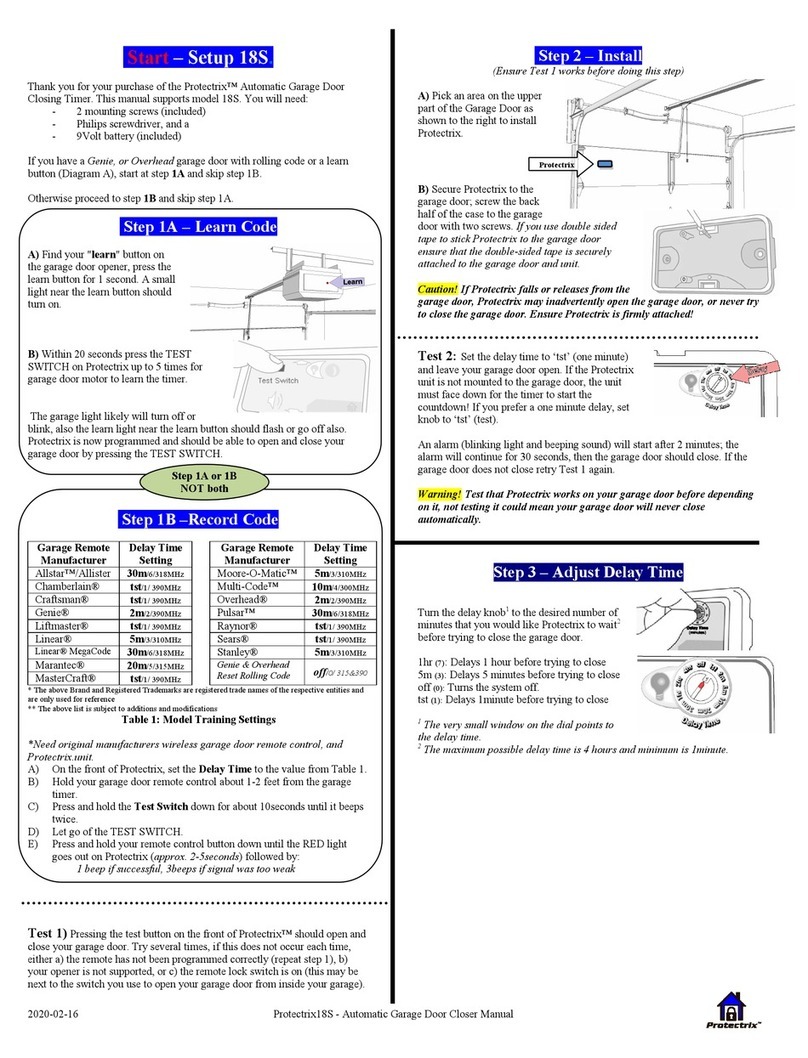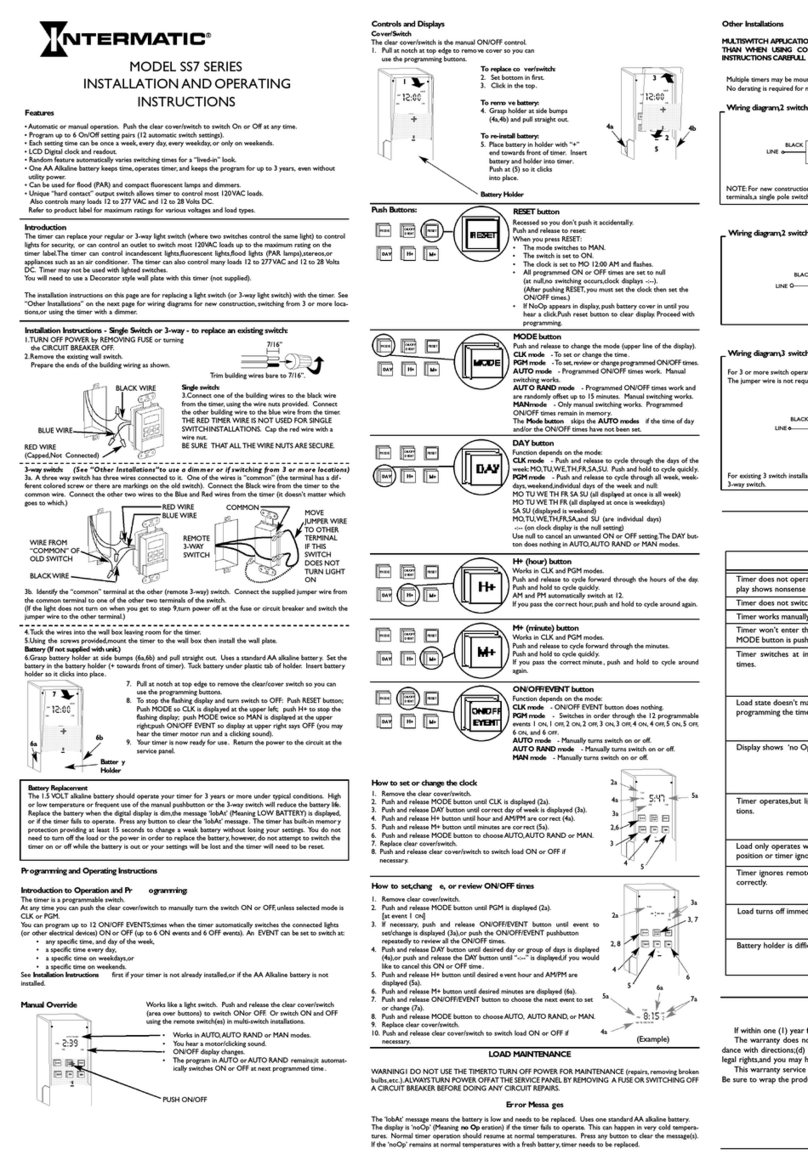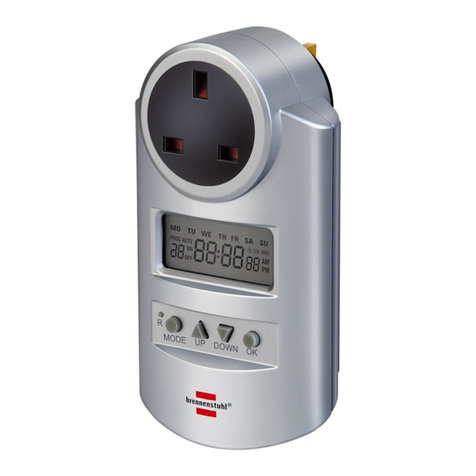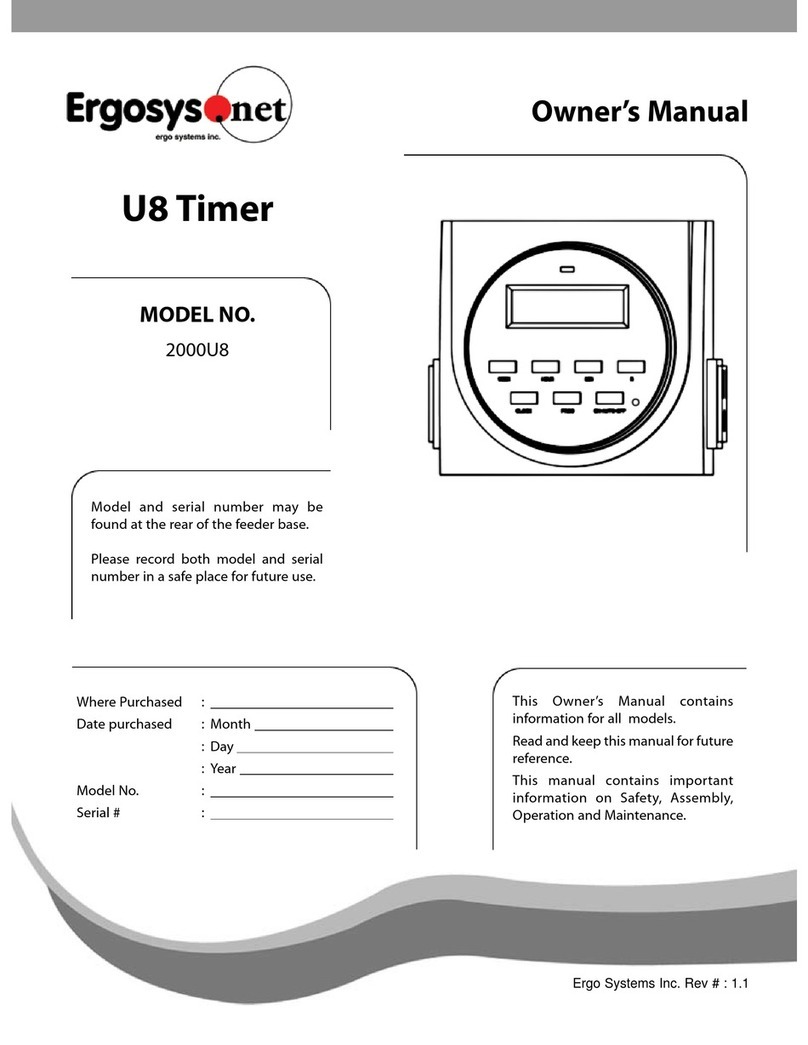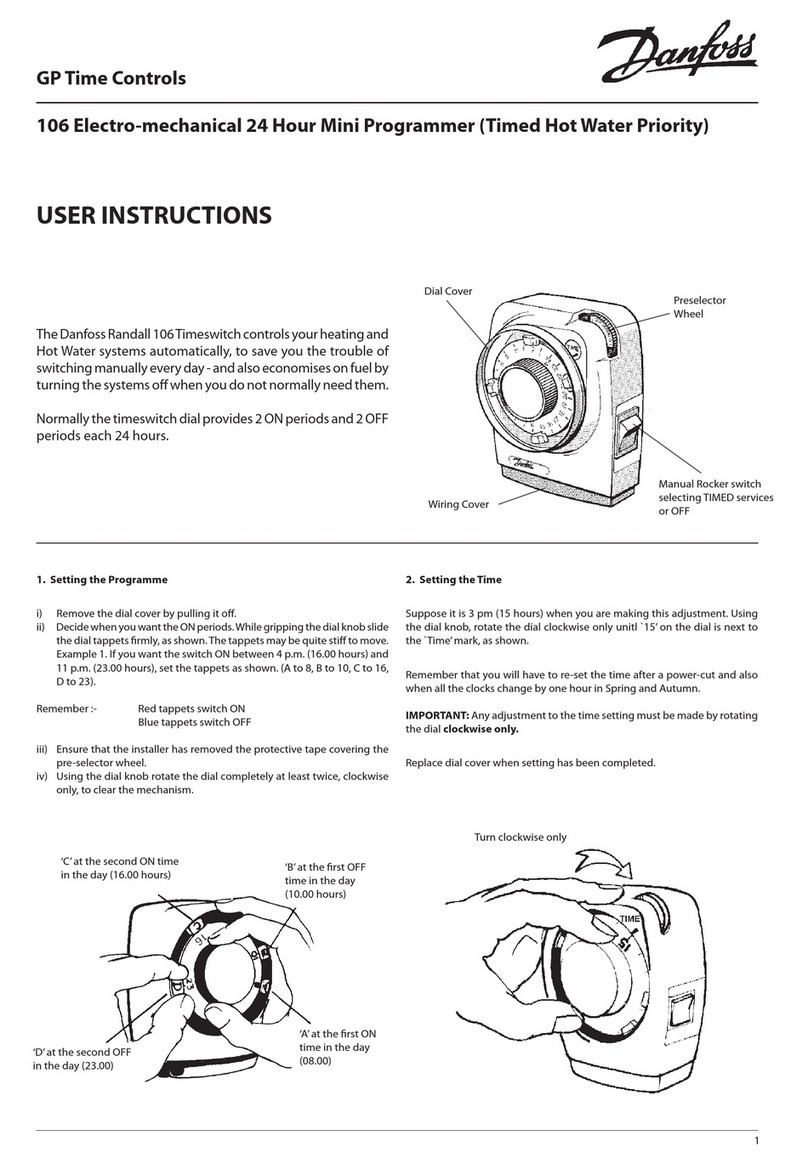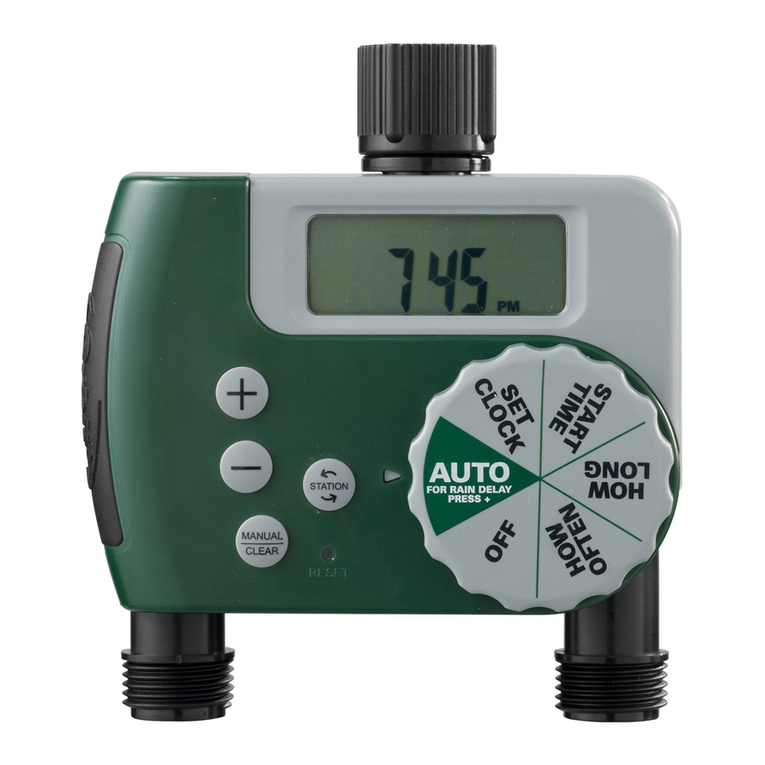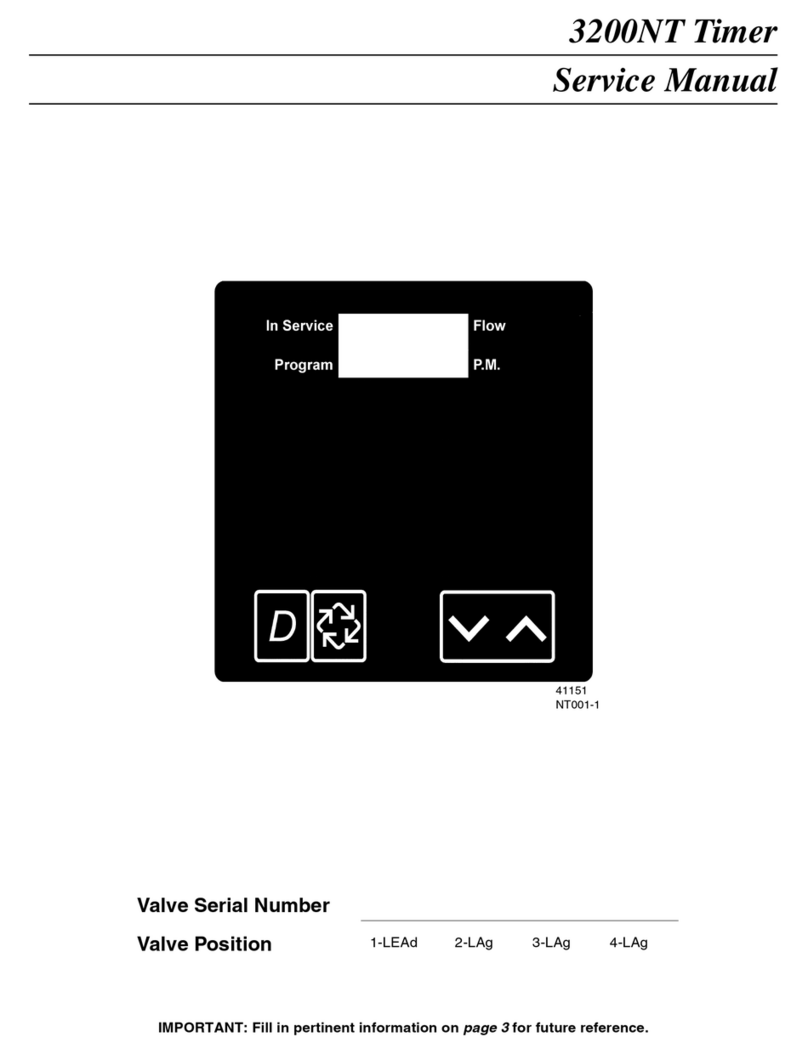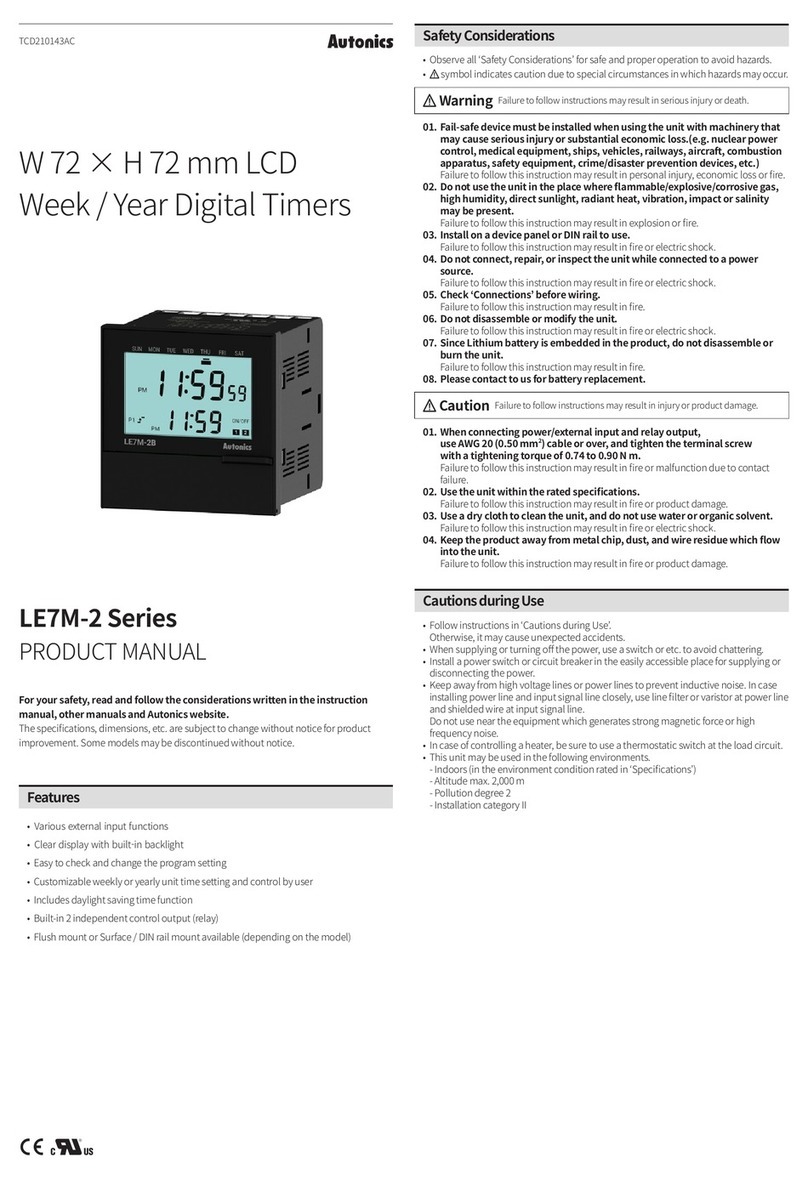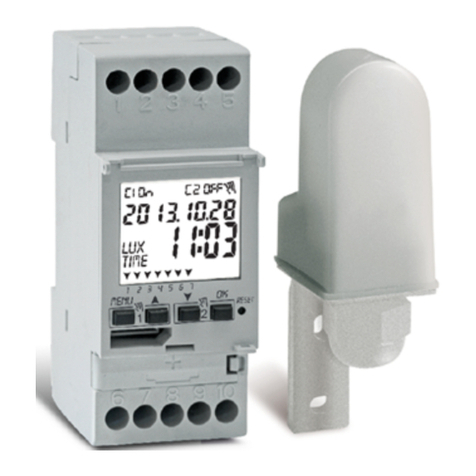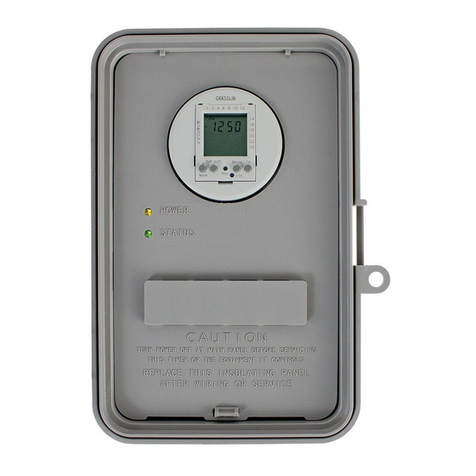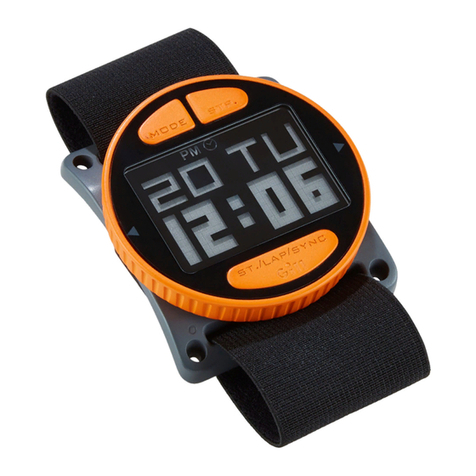ffelectronics Sidus F1B Service manual

Sidus F1B
Sidus F1BSidus F1B
Sidus F1B
Quick Reference Manual
Version 3.0 – October 2010 - © M.U. 2007/2010

Sidus F1B – free flight electronic timer
2/11
This system replaces a clockwork timer by recreating the disc rotation through a micro
servo. Key advantages are accurate timings and remotely controlled dethermalization
(RDT). The disc rotates of one step and releases an arm when the time for a programmed
function expires. The stepping is controlled by a tiny electronic board which retains the
programmed timing and data. Only one pushbutton is used to set, start, cancel, stop and
reset the timing. A pocket sized programmer is used to change the timing, dethermalize
the model, and accurately adjust the micro servo positioning. The devices communicate
through optical and radio links therefore no cables are needed.
Getting started
Refer to the pictures below to recognize the system components.
•Locate the connectors, the IR sensor, the red led, the buzzer and the RDT antenna
socket on the Timer control board
•Connect the Timer control board to the micro servo, to the start switch, to the
recharge connector and to the LiPo battery . The Timer will turn ON. After about 60
seconds of inactivity the Timer will turn OFF
•Switch on the Programmer . The buzzer beeps and the display becomes active. The
switch is accessible by removing the slide cover on the bottom of the case. After about
60 seconds of inactivity the Programmer will turn OFF

Sidus F1B – free flight electronic timer
3/11
System components
IR sensor and red led
RDT antenna
socket
P
ROGRAMMER
T
IMER
C
ONTROL
B
OARD
start switch socket
bu er
TOP
VIEW
BOTTOM
VIEW
servo socket
battery socket
recharge socket
L
I
P
O
C
HARGER
L
I
P
O BATTERY
IR se
nsor
aperture
LCD display
RDT tx antenna
keyboard
9
-
12Vdc

Sidus F1B – free flight electronic timer
4/11
Timer
Duration and resolution of the functions
Each of the 6 available functions (F1 to F6) has a programmable time interval. The range
for F1 and F2 is 0.01 to 9.99 sec. The range for F3 to F5 is 0.1 to 99.9 sec. and the range
for F6 (DT time) is 1 to 720 sec.
Automatic switch off of the Timer
The Timer automatically goes to a “sleep” state to save power if inactive for about 60 sec.
While sleeping the state of the Timer and all the internal data are retained. The Timer
wakes up by pressing the start switch.
States of the Timer
The red led, the buzzer and the position of the disc indicate the current state of the Timer
according to the following scheme:
1. Led OFF: Timer sleeping. Press the start switch to wake it up: the Timer beeps and the
led turns ON
2. Led ON: Timer charged or discharged (disc at the beginning or at the end of its travel)
3. Led blinking fast / buzzer beeping: Timer armed, the timing sequence will start at
start switch release
4. Led blinking slow: timing sequence in progress. When the sequence is completed the
Timer goes to sleep
5. Led blinking and buzzer beeping (3 flashes / beeps): Timer battery to be recharged
Using the Timer
Starting from a discharged Timer (led ON, disc at end of its travel and all the arms
released) the functions are:
•RESET - bring down all the arms, press the start switch until the led starts blinking.
The disc turns back in steps to the beginning of its travel and the led remains ON
•START -press the start switch until the led blinks fast and the buzzer beeps. The
Timer is armed and the timing sequence will start as soon as the start switch is
released. It is possible to cancel the start as explained below
•START CANCEL - the Timer start can be cancelled even if it has been armed,
for example if you wish to postpone the flight because of a sudden change of
the weather conditions. Once the Timer starts beeping, you have 18 seconds
(normal time) + additional 6 seconds (alert time) to drop the model and the Timer will
start. If you continue pressing the start switch, the buzzer will stop beeping and the
Timer will not start: the start is cancelled and you can safely release the start switch
•STOP -the timing sequence can be early terminated by keeping the start switch
pressed for at least 3 seconds: all the pending functions are executed in steps
and the disc goes back to the end of its travel

Sidus F1B – free flight electronic timer
5/11
Programming the Timer
The Programmer is needed to modify the timing sequence and dethermalize the model. It
also allows to calibrate the servo positioning and set other functions.
Each time the Programmer is started, it briefly displays the following startup screen
then it switches to the MAIN menu
For each menu the possible options are displaced at the corners of the rectangular display
window: an option is selected through the button (T1 to T4) located at the same corner of
the rectangle made up of the 4 buttons (see drawing).
A long or short button pressure may be required according to the following rule:
choices displayed all in upper case (e.g. READ, RDT) require a long pressure
(press and hold), choices displayed in lower case except the first character (e.g.
Exit, Servo,..) require a short pressure (press and release).
To allow Programmer <> Timer communications, aim the Programmer at the Timer
(make sure it is ON !) closer than 20 cm. with the IR sensors mutually visible. In
case of communication failure, the message ERR!
ERR!ERR!
ERR!” is displayed
Modify the timing sequence
After power on, the Programmer displays the MAIN menu. Before modifying the timing
sequence, read it from the Timer.
1. aim the Programmer at the Timer (make sure it is ON)
2. press and hold T1 (READ) until the intervals programmed for the 6 functions appear on
the display:
3. press and release T1: an asterisk ‘*
**
*’ appears close to the time of the first function
(FUNC1). Press and release T1 again to move the asterisk close to the function to be
1.00 1.00 01.0
1.00 1.00 01.01.00 1.00 01.0
1.00 1.00 01.0
01.0 01.0 0010
01.0 01.0 001001.0 01.0 0010
01.0 01.0 0010
READ
READREAD
READ R
R R
RDT
DTDT
DT
WRITE
WRITE WRITE
WRITE
SET
SETSET
SET
MAIN menu
SIDUS e
SIDUS eSIDUS e
SIDUS e-
--
-Timer
TimerTimer
Timer
V3.20 B059 12/09
V3.20 B059 12/09 V3.20 B059 12/09
V3.20 B059 12/09
sw vers.
RDT code
date
startup screen
FUNC1 FUNC2 FUNC3
FUNC4 FUNC5 DT

Sidus F1B – free flight electronic timer
6/11
modified, then press and hold T1 until the asterisk turns into ‘w
ww
w’ (write): the function is
ready to be modified
4. press and release T3/T4 to increase/decrease the time of one step or press and hold
T3/T4 to have faster increments/decrements. When the wished value is reached, press
and release T2 (ESC) to end modifications or press and release again T1 to choose
another function to modify
5. The modified values must now be written onto the Timer for permanent storing. Press
and hold T2 (WRITE) until the message “Writing
WritingWriting
Writing” is displayed. The modified values
are then read back from the Timer and shown again on the display
Remote dethermalization (RDT)
Press and hold T3 (RDT) (> 1 sec) while the timing is in progress to dethermalize the
model (RDT). The message ‘RDT/R C Transmitting
RDT/R C TransmittingRDT/R C Transmitting
RDT/R C Transmitting…’ will be displayed.
The effect of the command depends on the value chosen for the intermediate
JUMP2 function (see following).
•if the JUMP2 function is not yet executed, the Timer will jump to it. By pressing and
holding T3 again (RDT) the Timer will dethermalize the model
•if the JUMP2 function is already executed, the command will produce immediate
model dethermalization
Advanced settings
All the advanced settings are accessible under the Set menu. From the MAIN
press and hold T4 (Set) (> 3 sec) until entering the Set menu
Change the timing visualization: Absolute or Relative
1. Press and release T1 (TView) to enter the TView menu:
2. Press and release T3 (Abs) for absolute visualization. Press and release T4 (Rel) for
relative visualization
3. When finished press and release T2 (ESC) to go back to the Set menu and press and
release again T2 (ESC) to end modifications
T
TT
TV
VV
View = Abs
iew = Absiew = Abs
iew = Abs
ESC * Rel
ESC * RelESC * Rel
ESC * Rel
TView Buzz
TView BuzzTView Buzz
TView Buzz
ORE/Exit
ORE/ExitORE/Exit
ORE/Exit
SET
menu
TView
menu

Sidus F1B – free flight electronic timer
7/11
JU P2
JU P2 JU P2
JU P2
Exit
Exit Exit
Exit Servo
ServoServo
Servo
Enable or Disable the Programmer buzzer
1. From the Set menu press and release T3 (Buzz) to enter the Buzz menu:
2. Press and release T3 (On) to enable the buzzer. Press and release T4 (Off) to disable
the buzzer
3. When finished press and release T2 (ESC) to go back to the Set menu and press and
release again T2 (ESC) to end modifications
Modify the disc positioning defaults
The Timer comes with default settings that usually do not need to be modified, however
the Programmer allows changing the positioning of the disc, should it become necessary
(e.g. micro servo replacement).
1. aim the Programmer at the Timer (make sure it is ON)
2. from the Set menu press and hold T2 (> 3 sec) until entering the SET2 submenu:
3. press and release T4 (Servo) to enter the FUNCTION menu. The disc moves to the
start position
4. Press and release T3 (func+) or T4 (func-) to increase or decrease the current
function and step the disc to the related position. The disc steps to 7 different positions
(START →FUNC1 →FUNC2 →FUNC3 →FUNC4 →FUNC5 →DT). The positions
for START and DT correspond to the initial and final disc position respectively
Buzz = * On
Buzz = * OnBuzz = * On
Buzz = * On
ESC Off
ESC OffESC Off
ESC Off
START
START START
START f
ff
func+
unc+unc+
unc+
Exit
Exit Exit
Exit f
ff
func
uncunc
unc-
--
-
FUNCTION menu
SET2 submenu
Buzz
menu

Sidus F1B – free flight electronic timer
8/11
JU P2
JU P2 JU P2
JU P2
Exit
Exit Exit
Exit Servo
ServoServo
Servo
SET menu
5. Press and release T3 or T4 to reach the wished function (e.g. FUNC5), then press and
hold T1 until the POSITION menu is displayed:
6. Press and release T3 (pos+) or T4 (pos-) to accurately adjust the disc position for the
current function (Keep T3 or T4 pressed to have a faster movement). The new
positions are permanently stored
7. Press T2 (ESC) to go back to the FUNCTION menu and repeat the steps above to
adjust the disc position of another function or press again T2 (ESC) go back to the
SET menu.
Intermediate step in case of early radio DT
When the RDT is activated (e.g. while the engine is running) it is possible set the Timer to
have the disc jumping to an intermediate function (JUMP2 function) safer than DT, helpful
to prevent model damage. If the RDT is activated again (or if it is activated after the
JUMP2 function), the disc will immediately jump to DT (see the example below).
Example: engine stop is FUNC1, bunt is FUNC2, rudder is FUNC3, first glide is FUNC4,
JUMP2 function is set to FUNC2
•In case of RDT during FUNC1, the Timer terminates FUNC1 and jumps to FUNC2.
The timing continues. In case of further RDT activation the model is instantly
dethermalized
•In case of RDT later than FUNC1 the model is instantly dethermalized
JUMP2 function setting
1. Aim the Programmer at the Timer (make sure it is ON)
2. Through the FUNCTION menu (see “Disc positioning modification”) move the disc
to the function the disc must jump to (JUMP2 function) in case of early DT
3. Press and release T2 (Exit) to exit the FUNCTION menu and enter the SET menu:
4. Keep T3 (JUMP2) pressed until getting the message “Writing
WritingWriting
Writing…”
5. Double check the settings: start the timer, push the RDT button once during the
function(s) before JUMP2 function and check that the disc jumps to JUMP2.
Push the RDT button again and check that the discs jumps to DT (end of travel)
FUNC5 pos+
FUNC5 pos+FUNC5 pos+
FUNC5 pos+
Exit
Exit Exit
Exit pos
pos pos
pos-
--
-
POSITION
menu

Sidus F1B – free flight electronic timer
9/11
Charging the batteries
A micro LiPo battery field Charger is supplied with the system. The red / black cable must
be connected to any 9-12 Vdc power source (for example to the car lighter socket). The
same Charger is used to charge both the Timer and the Programmer LiPo batteries
separately. Full recharge of a battery will take about 2 hours.
Use only the battery charger supplied with the system. Discard a LiPo battery if it
shows bulges or scratches. Never leave a LiPo battery unattended while charging.
Charge must take place in a safe place and always far from flammable materials.
Status of the charger leds
•9-12Vdc power connected, no LiPo battery connected: Green ON, Red ON
•Charge in progress: Red ON, Green OFF
•Charge complete: Red OFF, Green ON
Charging the Timer battery
Connect the charger 3-pin plug to the Timer recharge socket located on the side of the
pylon: the battery remains connected to the Timer. A spare battery can be directly
connected to the 2-pin socket on the charger.
Charging the Programmer battery
Connect the charger 3-pin plug to the Programmer recharge
socket, accessible by removing the slide cover on the bottom of the
case. the battery remains connected to the Programmer.
recharge socket
ON-OFF switch

Sidus F1B – free flight electronic timer
10/11
Wiring
Fitting the pylon
start switch
micro servo
battery
CONTROL BOARD
LiPo CHARGER
recharge socket
recharge
the battery may remain permanently connected for months (sleep current is a few microA)
observe the polarities of the wires when soldering them to the recharge socket!!!
connect the start switch freely as it has no polarities
+
++
+
+
++
+
-
--
-
RDT antenna
9-12Vdc
place the control board with the IR sensor and the led close to the pylon
side to have them clearly visible through a small transparent window.
glue the recharge socket to a pylon side
to have it easily accessible from outside
the RDT antenna must come out from top of the pylon and be
insulated from carbon or aluminum parts through a plastic spacer

Sidus F1B – free flight electronic timer
11/11
Installing the Timer on multiple models
One additional Timer control board with the same RDT code is required to provide another
model with the
Sidus
SidusSidus
Sidus
electronic timer. The RDT code is unique for each modeller to allow
all his Timer control boards to be used with a single Programmer. In addition it makes it
possible to use the
Sidus
SidusSidus
Sidus
system simultaneously with other modellers having the same or
other systems.
Recommendations
Battery and recharge socket
The batteries guarantee about 60 flights of 180 seconds each and about 200 DT’s.
If you are not going to fly the model in a few weeks, just disconnect the Timer
battery and switch the Programmer off.
RDT antenna
The RDT antenna (the thin green twisted steel wire supplied) must come out of the top of
the pylon. It must be electrically insulated from carbon or metal parts through a plastic
spacer. Connect the antenna to the RDT antenna socket placed on the Timer control
board through the small plug supplied with the system. Failure to follow the above will
result in a poor range of the whole RDT system.
Control board
Place the control board with the IR sensor and the led close to the pylon side to
have them clearly visible through a small transparent window. The control board
must not touch carbon surfaces that get hot under direct sun exposure
Table of contents
Other ffelectronics Timer manuals
